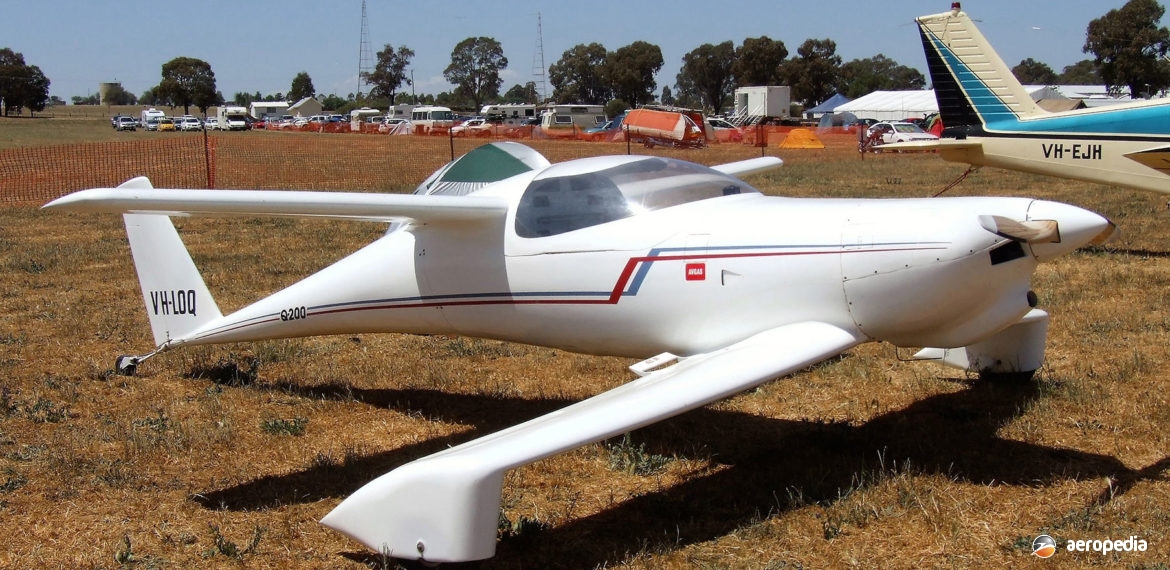Photograph:
Quickie Q-200 VH-LOQ (c/n V107) at Cowra, NSW in September 2010 (David C Eyre)
Country of origin:
United States of America
Description:
Two-seat light sport aircraft
Power Plant:
One 48 kw (64 hp) Revmaster 2100 DQ four-cylinder horizontally opposed air-cooled engine
Specifications:
- Wingspan: 5.08 m (16 ft 8 in)
- Length: 5.97 m (19 ft 7 in)
- Wing area (foreplane): 6.22 m² (67 sq ft)
- Max speed: 290 km/h (180 mph)
- Cruising speed: 249 km/h (155 mph)
- Stalling speed: 99 km/h (61 mph)
- Max rate of climb at sea level: 366 m/min (1,200 ft/min)
- Service ceiling: 4,575 (15,000 ft)
- Range with max fuel at max cruising speed and 45 mins reserves: 1,097 km (682 miles)
- Empty weight: 215 kg (475 lb)
- Loaded weight: 454 kg (1,000 lb)
History:
The Q-2 is a high performance two-seat canard design, a development of the Quickie Q-1 aimed at the inexperienced first time amateur constructor, with only a small working area and a normal complement of tools. The prototype was flown for the first time on 1 July 1980 and subsequently it was offered as a complete construction kit, deliveries beginning in February 1981. Total drag of the Q-2 is said to be roughly equivalent to that of the undercarriage alone of a typical Cessna or Piper, ie 1.35, and this is achieved with a fixed undercarriage, without flaps, etc.
Accommodation is provided for two, the cockpit being 1.2 m (43.5 in) wide and the baggage compartment providing 0.383 m³ (4 cub ft) of space to take up to 18 kg (40 lb). Long, slim objects, such as skis or fishing equipment could be carried by extending them aft in the fuselage as far as the tail cone. Construction is of sandwich composite structure throughout, being a shaped core of foam with fibreglass epoxy laminate on either side and foam inside. The wing cores are of solid foam hotwired boat billets. The fuselage is supplied to the builder premoulded in four sheets for assembly.
The Q-2 was designed to take engines weighing between 63 kg (140 lb) and 77 kg (170 lb) although engines up to 83 kg (183 1b) could be fitted. Usually the Revmaster 2100 DQ was fitted, although the Continental A-65 or C-85 series could be fitted, as could the 48 kw (65 hp) Lycoming. A number have been and are being built in this region, with more than fifteen completed. TriQ Development Inc of Ohio offered a modification to tricycle undercarriage for the Q-2 series.
In 1983 the Q-200 was introduced, this having a 75 kw (100 hp) Continental 0-200 four-cylinder engine providing a maximum cruising speed at 75% power of 333 km/h (207 mph) and an economical cruising speed of 193 km/h (120 mph).

